Some time ago, our daughter’s best friend was looking for ideas of Scottish fairy tales books for her young daughter and she asked me if I had suggestions. I needed no more to turn to my library for over the years I have collected a number of such books and… guess what… hardly had I opened the first book that I got deeply immersed in my reading ;-). But the love of folk tales dates back to my childhood when, with an insatiable thirst, I used to borrow book after book of “Contes et Légendes” from our local library.

Painting by Sophie Gengembre Anderson (1823 – 10 March 1903)
A portrait of a fairy (1869). The title of the painting is “Take the Fair Face of Woman, and Gently Suspending, With Butterflies, Flowers, and Jewels Attending, Thus Your Fairy is Made of Most Beautiful Things “- purportedly from a poem by Charles Ede.
Sophie Gengembre Anderson (1823 – 10 March 1903) was a French-born British artist who specialised in genre painting of children and women, typically in rural settings. She began her career as a lithographer and painter of portraits, collaborating with Walter Anderson on portraits of American Episcopal bishops. Her work, Elaine, was the first public collection purchase of a woman artist. Her painting No Walk Today was purchased for more than £1 million (Wikipedia).
This lovely portrait of a fairy is featured on the front cover of an edition of Donald Alexander Mackenzie’s Scottish Fairy Tales
We have a rich heritage of fairy and folk tales in France but I think Scotland is second to none in that field. That’s one more reason to love this wonderful country 😉 and this is also why I’ve decided to read or re-read as many as I can of the traditional Scottish tales of Scotland in the following months and to share my reading with you on Scotiana and on a regular basis. The mere idea of starting a new Scottish adventure really delights me and I’ve found no better time to begin it than Christmas.
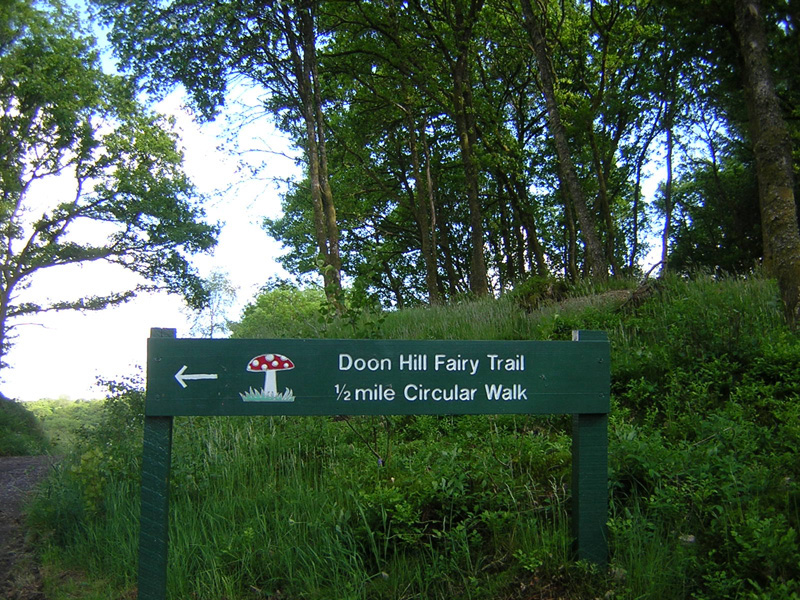
Doon Hill Fairy Trail Aberfoyle © 2004 Scotiana
There are more than one path in Scotland leading to very mysterious places… some of them, like Doon Hill Fairy Trail, are supposed to lead to places inhabited by fairies which have become mythical places over time. Reverend Kirk, whose fate is linked with this place has described the world of the fairies in his famous book entitled The Secret Commonwealth of Elves, Fauns and Fairies which, interestingly enough, is subtitled “An Essay on the Nature and Actions of the Subterranean (and for the most part) invisible people, heretofore Going Under the Name of Elves, Fauns and Fairies”. The book was not published during the life of Reverend Kirk for he died, rather mysteriouslywhile walking on Doon Hill path, on 14 May 1692, at the age of 47…

Doon Hill fairy figurine Aberfolye © 2004 Scotiana
Do you believe in fairies?
(J.M. Barrie Peter Pan 1904)

Doon Hill fairy tree Aberfoyle © 2004 Scotiana
On these pictures you can see my Folio collection of Andrew Lang’s “Coloured Fairy Books“, a beautifully illustrated and very well introduced edition of the famous anthology of world tales, collected, translated and edited by the well-known Scottish writer in close collaboration with his wife, Leonora Blanche Alleyne, without whom Andrew Lang, who was also a literary critic and anthropologist, could not have achieved such a considerable work as he recognizes it himself:
My part has been that of Adam, according to Mark Twain, in the Garden of Eden. Eve worked, Adam superintended. I also superintend. I find out where the stories are, and advise, and, in short, superintend.”
The first edition consisted of 5000 copies, which sold for 6 shillings each. The book assembled a wide range of tales, with seven from the Brothers Grimm, five from Madame d’Aulnoy, three from the Arabian Nights, and four Norwegian fairytales, among other sources. The Blue Fairy Book was the first volume in the series, and so it contains some of the best known tales, taken from a variety of sources. (Wikipedia)
What I love in Andrew Lang’s series is that it contains most of the tales I loved so much when I was young, with a significant difference however: they’re written in English 😉 As it obliges me to pay more attention to understand the intricacies of a foreign language, I discover things I didn’t even notice when I read the stories in one go, in French, my native tongue.
Now, let us see what we can find in the children’s room for is not the colourful bookshelves of our dear little ones the best place to find books of fairy tales ? Yes, indeed, it’s like entering an Ali Baba’s cavern ;-). But where to begin ?
In the selection of books I had suggested to our friend, Theresa Breslin’s and Kate Leiper’s Illustrated Treasury of Scottish Folk and Fairy Tales is the book she finally chose for her daughter. I had found a review of it on the Scottish Book Trust website. Theresa Breslin and Kate Leiper are also the authors of An Illustrated Treasury of Scottish Mythical Creatures.
Slithering stoorworms, mischievious brownies, fierce kelpies and magical selkies — these are the creatures of Scottish folklore. Award-winning children’s author Theresa Breslin has collected the best-loved tales from all over Scotland. Retelling each in its own individual style, she presents funny tales, moving tales and enchanting fairy tales. Soar with the goshawk, dive with selkies and battle with the stoorworm, as each story is brought to life with exquisite illustrations by Scottish fine artist Kate Leiper, which brim with otherworldly beauty. A wonderful gift, this is a truly stunning book to be treasured for a lifetime and will be enjoyed by parents and grandparents as well as children.

Storytelling is an essential part of Scottish culture and it is still very lively in Scotland with, for example, the survival of the traditional “ceilidhs” or the opening in 2006 of a Scottish Storytelling Centre on the High Street in Edinburgh’s Royal Mile but I’m particularly impressed by what they do in Scotland to encourage kids and young people to read and love books. Look at the funny and lovely bookbug mascots the Scottish Book Trust has created for the youngest ones 😉
The Scottish Storytelling Centre is a vibrant arts venue with a seasonal programme of live storytelling, theatre, music, exhibitions, workshops, family events, and festivals. We are the home of two festivals: TradFest, a traditional arts festival that takes place in the spring, and the Scottish International Storytelling Festival in October. We’re also a host venue for the Edinburgh Festival Fringe and other exciting cultural programmes all year round.
We’re a great meeting place where you can experience Scotland’s rich story heritage. In the Storytelling Court you’ll find an interactive Storywall which children (and adults!) enjoy exploring. Try to find Greyfriars Bobby; catch the frog; meet Nessie, the Gruffalo and Wee Willie Winkie; and discover traditional Scottish tales. Tucked around the corner you can listen to excerpts from Edinburgh’s most famous storyteller, Robert Louis Stevenson, and we always have a free exhibition on display.
Swap your own stories in the Café over some delicious home baking and great coffee. Browse our bookshop in the medieval luckenbooths of John Knox House and see if you can spot our dragon’s nest and time capsule hiding among the books. Attached to the Scottish Storytelling Centre is John Knox House, creating a very unique venue that incorporates contemporary design with medieval architecture. Explore this museum to learn about one of the most turbulent times in Scottish History.
The Scottish Storytelling Centre is also the Headquarters of the Scottish Storytelling Forum which offers its members exclusive access to development events; discounts on our Workshops and Courses; and support and advice on professional development.
http://www.tracscotland.org/scottish-storytelling-centre/about-the-centre

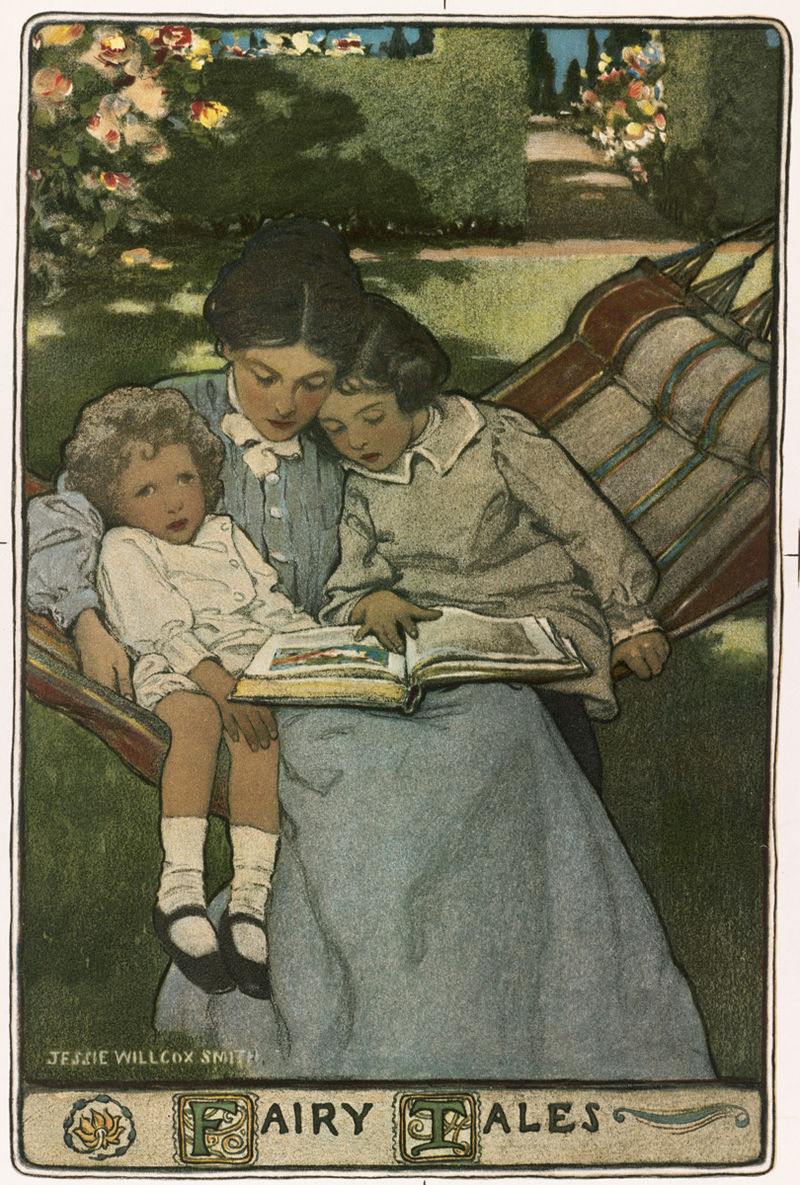
Cover illustration of a 19th Fairy Tales volume by Jessie Willcox Smith Wikipedia
The tales which impressed our imagination so strongly when we were young have left their marks on our imaginary forever but there is much more behind them than we may have thought first. The hidden meaning of these tales may explain why they have been written about so extensively.
Today, contrary to what I used to do when I was a child, I never miss the introduction of a book of tales, be it written by the editor, by a folklorist or still better by the very people who collected the tales, sometimes very long ago, like Walter Scott or James Hogg, though they were not the first ones. The reading of the introduction can prove very useful to help replace the stories in their social and geographical context as it can be seen in the short extract of Donald Alexander Mackenzie’s introduction to his Wonder Tales. The book contains a few illustrations and also, at the end of the book, a short chapter entitled “Note to the reader: Who are Celts’ People”. Given the influence of the Celtic civilization on our Western Europe culture, which is particularly true in Scotland, these notes are of great interest.
The myths and legends of Scotland are full of what is called “local colour”. They afford us not only glimpses of ancient times and of old habits of thought and life, but also of the country itself at different times of the year. In the winter season the great mountain ranges are white with snow and many inland lochs are frozen over, but along the west coast, which is washed by the warm surface waters of the Atlantic and bathed in mild moist breezes from the south-west, there may be found sheltered and sunny spots where wild flowers continue to bloom.
The old people believed that somewhere in the west the spirit of Spring had its hiding-place, and they imagined this hiding-place to be a green floating island on which the sun always shone and flowers were always blooming. During the reign of Beira, Queen of Winter, the spirit of Spring, they thought, was always trying to visit Scotland, and they imagined that Beira raised the storms of January and February to prolong her reign by keeping the grass from growing. Beira was regarded as a hard and cruel old woman, and the story of her exploits is the story of the weather conditions in winter and early spring. She rouses the dangerous whirlpool of Corryvreckan, she brings the snow, she unlooses the torrents that cause rivers to overflow. According to folk belief, it was she who formed the lochs and the mountains.
In the days when the people had no calendar, the various periods of good and bad weather were named after the battles of Beira and the victories of the spirits of sunshine and growth. Gaelic-speaking people still refer to certain gales in February and March by their ancient names–the “whistling wind “, the “sweeper”, and so on, as set forth in the second chapter. On the northeast coast even those fisher folks, who are not Gaelic speakers, still tell that the fierce southwesterly gales of early spring are caused by the storm-wife whom they call “Gentle Annie”. This Annie may be the same old deity as Black Annis of Leicestershire and Anu of Ireland, whose name lingers in the place name, the “Paps of Anu”, a mountain group in County Kerry. In Scotland the story of the winter goddess, Beira, has a strictly local setting. She is, in consequence, a local deity. Bride, the lady of summer growth, is still remembered also, and there are beautiful Gaelic songs about her (…)
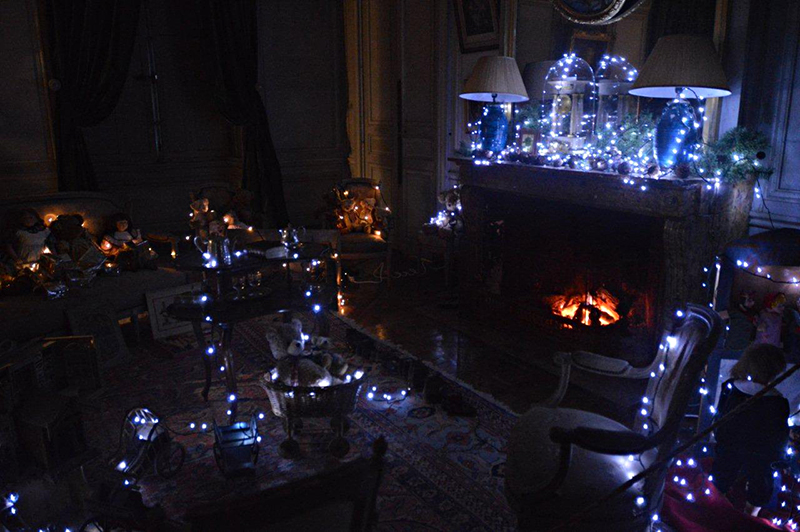
Noël au château de La Ferté Saint Aubin © 2014 Scotiana
.
“It was in winter that the islanders gathered round the hearth fire to listen to the stories” writes George Mackay Brown in Winter Tales, and though “Much of the old story-telling has withered before the basilisk stare of newsprint, radio, television” why not choose one of those wonderful folk and fairy tales to add a touch of magic to Christmas times.
.
But, as interesting as the introduction of a book of tales can be it will never replace the pleasure of reading these tales and that’s why I’m giving you the links to a number of these wonderful stories.
Wonder Tales from Scottish Myth and Legend
by Donald Alexander Mackenzie
Illustrations by John Duncan
Frederick A Stokes Co., New York
[1917]

Wonder Tales Donald Alexander Mackenzie The Coming of Bride Illustration by John Duncan
Title Page
Contents
Illustrations
Introduction
Chapter I
Chapter II. The Coming of Angus and Bride
Chapter III. Combats that Never End
Chapter IV. The Princess of Land-under-Waves
Chapter V. Nimble Men, Blue Men, and Green Ladies
Chapter VI. Conall and the Thunder Hag
Chapter VII. Story of Finlay and the Giants
Chapter VIII. Heroes on the Green Isle
Chapter IX. A Vision of the Dead
Chapter X. The Story of Michael Scott
Chapter XI. In the Kingdom of Seals
Chapter XII. Story of Thomas the Rhymer
Chapter XIII. The Maid-of-the-Wave
Chapter XIV. Exiles from Fairyland
Chapter XV. Friends and Foes of Man
Chapter XVI. The Land of Green Mountains

Title Page
Contents
Introduction
The Three Green Men of Glen Nevis.
Nursery Stories
The Story of the White Pet
The Milk-White Doo.
The Croodin Doo
The Cattie Sits in the Kiln-Ring Spinning
Marriage of Robin Redbreast and the Wren
The Tempted Lady
The Fause Knight and the Wee Boy
The Strange Visitor
Rashin-coatie
Stories of Animals
The Fox Outwitted
The Fox Troubled With Fleas
The Fox and the Bag-Pipes
The Fox’s Stratagem
The Fox and the Wrens
The Fox and the Cock
How the Wolf Lost His Tail
Frog and Crow
The Grouse Cock and His Wife
The Eagle and the Wren
The Wren’s Presumption
The Two Foxes
The Bee and the Mouse
The Two Mice
Alexander Jones
Fairy Tales
The Fairies of Scotland
The Fairy and the Miller’s Wife
Sir Godfrey Macculloch
The Laird O’ Co’
Habitrot
The Tulman
The Isle Of Pabaidh
Sanntraigh
Water Fairies
Fairy Transportation
The Poor Man of Peatlaw
The Fairy Boy of Leith
Mind the Crooked Finger
The Two Young Ploughmen
The Smith and the Fairies
The Lothian Farmer’s Wife
Redemption From Fairy Land
The Fairy and the Bible-Reader
Thom and Willie
The Gloaming Bucht
The Fairy’s Song
The Faithful Purse-Bearer
The Brownie, The Bogle, The Kelpy, Mermen, Demons
The Scottish Brownie
The Brownie Of Bodsbeck
The Brownie And The Thievish Maids
The Bogle
The Doomed Rider
Graham Of Morphie
The Fisherman and the Merman
The Mermaid Wife
The Seal-Catcher’s Adventure
The Mermaid Of Knockdolion
The Young Laird Of Lorntie
Nuckelavee
The Two Shepherds
Fatlips
The Silly Mutton
Witchcraft
Macgillichallum of Razay
The Witch Of Laggan
The Blacksmith’s Wife of Yarrowfoot
The Miller of Holdean
Ronaldson of Bowden
The Farmer’s Wife Of Deloraine
Laird Harry Gilles
The Missing Web
The Witches Of Delnabo
The Brazen Brogues
Comic Tales
The Wee Bunnock
The Tale of The Shifty Lad, The Widow’s Son
Lothian Tom
The Ploughman’s Glory; Or, Tom’s Song.
The Witty Exploits of Mr. George Buchanan, the King’s Fool
Literary Tales
The Haunted Ships
Elphin Irving
Cousin Mattie
Rat Hall
I’ve chosen to give the final word to Duncan Williamson, a very popular Scottish storyteller who died in 2007. He was a member of the Scottish Traveller community. The Scottish poet and scholar Hamish Henderson once referred to him as “possibly the most extraordinary tradition-bearer of the whole Traveller tribe”
“Father would say, ‘Well, thank God this is Christmas Eve. Come doon beside me and I’ll tell you a story. Now remember, children, any toy I could buy – what’s the sense of buying you a toy when you’ll only break it ! It’ll be destroyed in a couple of days. Even if I had the money to afford it. But this story will last you the entire time of your life’ My father told me a story when I was only five years old. Now that’s almost exactly sixty years ago. And I can remember that tale the way he told it to me, just the very way. I can visualise him sitting there by the fireside, a young man putting coals in his pipe, you know, smoking his pipe. And all the little kids gathered round the fire, he sitting there telling them a beautiful Christmas tale – which was far better to us now when I look back than anything he could have bought for us.”
(Duncan Williamson)

Noël au château – La Ferté Saint Aubin © 2014 Scotiana
JOYEUX NOËL À TOUS !


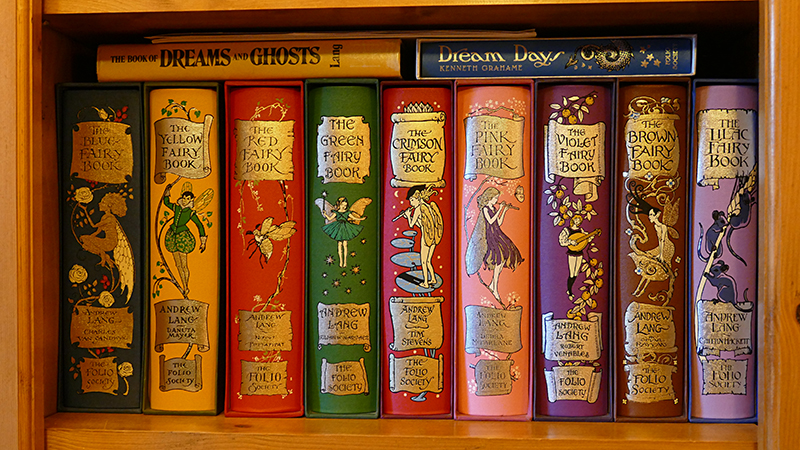



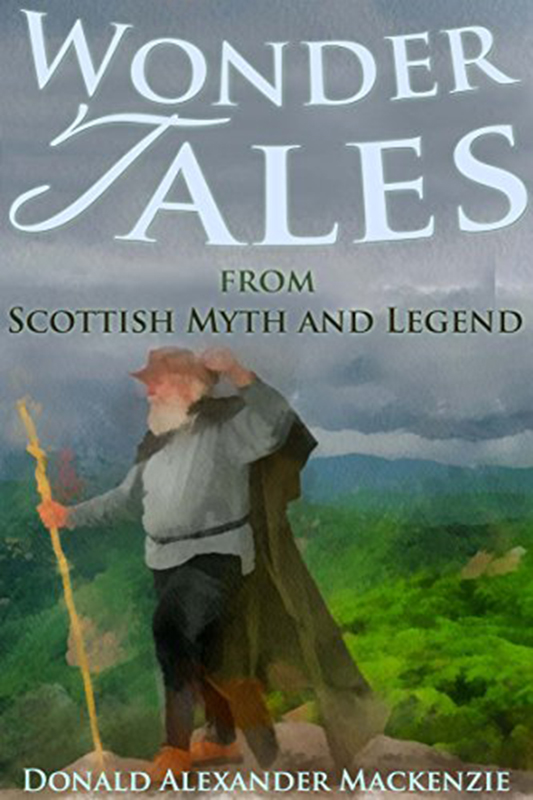





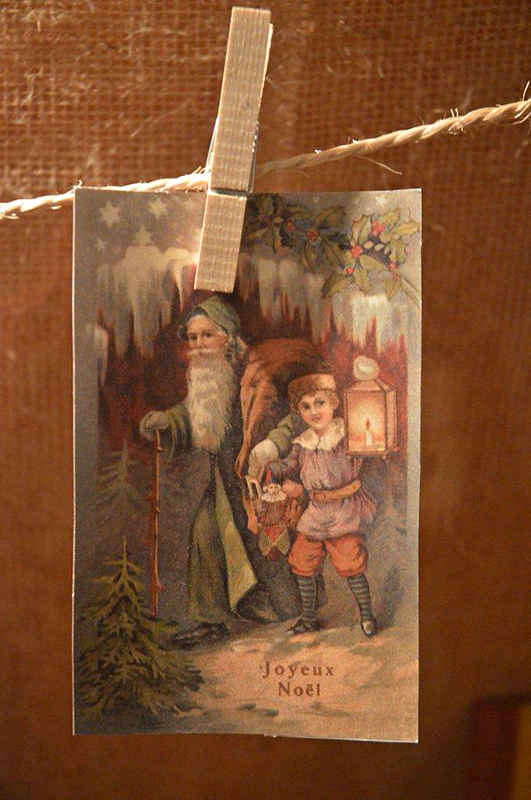
How nice to see Doon Hill! I’ve walked up there many a time. Happy Christmas!
What a beautiful page. Thanks for all the effort that has gone into this. Happy Christmas.
Thank you for another splendid post, Mairiuna, so interesting to read and beautiful to look at!
Could it be, I wonder, that the best of the fairies had wings and were actually some of God’s own messengers, the Angels?
I’m very fond of the idea of leaving a place free in one’s life for wonder, for mystery, for the possibility of even small miracles. Have you ever found something that seemed lost beyond hope, only for it to turn up again almost as soon as you began searching?
A few years ago, we discussed a piece from the Scots Magazine of October 1997 – Maurice Fleming wrote most memorably of the Newton Stewart solicitor Andrew McCormick and his celebrated book, ‘The Tinkler-Gypsies of Galloway’.
“This book was to be a friend for life,” Maurice wrote. “McCormick was an unashamed romantic, in love with the colour and mystery of the travelling people … If Andrew McCormick’s spirit is to be found anywhere, it will be found in some green corner where once there was a tent, a pony and cart, an open fire and good talk in the woodsmoke.”
Tales were told by night around the campfire, but frequently also when travelling. They would ‘shorten the road’, helping the miles and the hours pass more agreeably
Iain.
Thanks. Enjoyed looking through your web site, but in the process I wondered if you have encountered a Christmas story about brownies riding a hare. There is a specific reason that you may find interesting for my question. My sister collects old and odd Christmas decorations, especially Santas. So my wife and I are always on the lookout for interesting things to add to her collection. This year just before Christmas we found in a consignment shop a whimsical Christmas decoration that has a label that reads “Brownies Riding a Hare” on the box it came in. I bought it and immediately shipped it to her. Now that Christmas is over my wife and I began wondering what story is behind this decoration. The hare is attached to a “U” shaped piece of spring steel that makes it hover and bob slightly up and down over the base which is a snowy Christmas scene with one little Brownie putting stars at the top of a fir tree. Four other Brownies are riding on the hare’s neck and head. Any ideas?